
Small Methods
metrics 2024
Pioneering new paths in nanotechnology and polymer science.
Introduction
Small Methods, published by WILEY-V C H VERLAG GMBH, is an esteemed peer-reviewed journal dedicated to advancing the fields of Chemistry and Materials Science. With a 2023 impact factor placing it in the Q1 category of both disciplines, and impressive Scopus rankings (27th in Materials Science and Chemistry), this journal serves as a vital platform for researchers and professionals alike to disseminate their innovative methodologies and pioneering experiments. Spanning a wide array of topics from nanotechnology to polymer science, Small Methods encourages the submission of high-quality research that illustrates novel small-scale methods applicable in various scientific contexts. Despite its absence of Open Access options, the journal is highly regarded for its rigorous editorial standards and comprehensive peer-review process, making it indispensable for students and academics aiming to stay at the forefront of these dynamic fields. With convergence years from 2017 to 2024, Small Methods continues to define the intersection of methodological innovation and practical application in both chemistry and material sciences.
Metrics 2024
 3.11
3.11 10.70
10.70 12.10
12.10 107
107Metrics History
Rank 2024
Scopus
IF (Web Of Science)
JCI (Web Of Science)
Quartile History
Similar Journals

MRS Advances
Pioneering Research for Tomorrow's TechnologiesMRS Advances, published by Springer Heidelberg, is an esteemed academic journal that serves as a vital platform for disseminating cutting-edge research in the fields of condensed matter physics, materials science, and mechanical engineering. With an ISSN of 2731-5894 and an E-ISSN of 2059-8521, the journal is hosted in Switzerland and encompasses an impressive spectrum of innovative studies that impact both theoretical and practical applications. Throughout its converged years from 2012 and continuing through 2024, MRS Advances has established itself with notable rankings, including Q4 in condensed matter physics and Q3 in several related categories. This journal not only enriches the academic community with its rigorous peer-reviewed articles, but also encourages open discussions that further advance research innovations. Although currently not designated as an open-access journal, its accessibility through institutional subscriptions ensures that professionals, researchers, and students can engage with the latest advancements in the material science arena. Emphasizing its relevance, MRS Advances is dedicated to fostering interdisciplinary collaboration and inspiring new discoveries within the global research community.
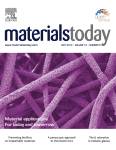
Materials Today
Pioneering Research for Tomorrow's TechnologiesMaterials Today is a premier academic journal published by Elsevier Science Ltd, specializing in the dynamic fields of materials science, mechanical engineering, and condensed matter physics. Established in 1999, the journal has garnered an enviable reputation, consistently ranking in the Q1 category across multiple disciplines including mechanics of materials and general materials science, reflecting its influence and high-quality research output. With an impressive Scopus ranking—4th in both mechanical engineering and mechanics of materials, and 6th in condensed matter physics—Materials Today serves as an essential resource for researchers, professionals, and students seeking to stay at the forefront of developments in material innovations and applications. The journal is known for its commitment to publishing significant research findings and reviews, making it a vital platform for disseminating knowledge and fostering collaboration in the rapidly evolving materials field. Although it does not offer open access, its robust impact factor underscores the importance of the content published, ensuring wide visibility and citation among the academic community. Explore the rich tapestry of materials research with Materials Today, where groundbreaking insights pave the way for future technological advancements.

JOURNAL OF CLUSTER SCIENCE
Exploring the Frontiers of Cluster ScienceJOURNAL OF CLUSTER SCIENCE, published by SPRINGER/PLENUM PUBLISHERS, is a prominent and influential journal in the fields of Biochemistry, Chemistry, Condensed Matter Physics, and Materials Science. With an ISSN of 1040-7278 and E-ISSN of 1572-8862, this journal has been contributing to scientific discourse since its inception in 1990 and continues to publish cutting-edge research through 2024. It holds a respectable position in the academic landscape with its category quartiles indicating a Q3 ranking in Biochemistry and Q2 rankings in Chemistry, Condensed Matter Physics, and Materials Science as of 2023. The journal's noteworthy Scopus rankings further underscore its relevance, particularly a rank of #82 in Condensed Matter Physics, showcasing its impact and the quality of research disseminated. Although it does not currently offer open access options, it remains a key resource for researchers, professionals, and students who are invested in understanding the complexities of cluster science and its interdisciplinary applications.
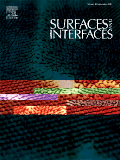
Surfaces and Interfaces
Exploring the Frontiers of Surface ScienceSurfaces and Interfaces is a leading international journal published by Elsevier, dedicated to advancing the understanding of surface and interfacial phenomena across various disciplines, including chemistry, materials science, and physics. With an impressive impact factor placing it in the Q1 quartile for its categories as of 2023—spanning Chemistry, Condensed Matter Physics, and Surfaces, Coatings, and Films—this journal not only serves as a critical platform for innovative research but also reflects the dynamic nature of surface science in contemporary applications. The journal is indexed in Scopus, ranking 25th out of 132 in the Materials Science – Surfaces, Coatings and Films category, marking it in the top 19% of this prestigious field. Although it is not an open-access platform, the journal remains a vital source of curated academic material for researchers, professionals, and students seeking to deepen their knowledge and contribute to ongoing conversations in surface and interface science. Published from the heart of Europe in Amsterdam, Surfaces and Interfaces invites submissions that challenge conventional paradigms and explore the forefront of technology and materials.

ChemNanoMat
Exploring the Future of Nanoscale MaterialsChemNanoMat is a prestigious academic journal published by WILEY-V C H VERLAG GMBH, dedicated to the rapidly evolving fields of nanoscale materials and their applications in diverse areas such as biomaterials, energy engineering, and environmental sustainability. With the journal's ISSN 2199-692X and recognized quality, as evidenced by its Q2 rankings across multiple categories—including Biomaterials and Renewable Energy—ChemNanoMat serves as a crucial platform for researchers, professionals, and students to disseminate their findings and foster collaborations. Operating from Germany, the journal encourages the exploration of innovative materials solutions to meet tomorrow's challenges. While it does not currently offer open access options, it remains highly regarded in the academic community with a competitive impact factor that emphasizes its relevance and influence in guiding future research directions. Covering a broad scope from 2015 through 2024, ChemNanoMat is key for anyone invested in the advancement of materials chemistry and related scientific fields.
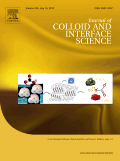
JOURNAL OF COLLOID AND INTERFACE SCIENCE
Unveiling the Complexities of Particle InteractionsJOURNAL OF COLLOID AND INTERFACE SCIENCE, published by Academic Press Inc, Elsevier Science, is a premier peer-reviewed journal that has been a cornerstone in the fields of colloid, surface chemistry, and biomaterials since its inception in 1966. With a strong impact in its respective disciplines, the journal holds a prestigious status in quartile rankings, including Q1 in Biomaterials, Colloid and Surface Chemistry, Electronic, Optical and Magnetic Materials, as well as Surfaces, Coatings, and Films for 2023. Its outstanding Scopus rankings, such as #4 in Colloid and Surface Chemistry and #6 in Surfaces, Coatings and Films, highlight its vital role in advancing research and understanding in these cutting-edge areas. Although not an open-access journal, it provides valuable insights and advancements that cater to an audience of researchers, professionals, and students aiming to push the boundaries of material science. As it continues to publish high-quality research through 2025 and beyond, the journal remains an essential resource for those involved in the exploration of the interactions between particles and surfaces.

BULLETIN OF MATERIALS SCIENCE
Advancing the Frontiers of Materials ScienceBulletin of Materials Science, published by the Indian Academy of Sciences, is a distinguished journal that has been contributing to the field of materials science since its inception in 1979. With an ISSN of 0250-4707 and E-ISSN 0973-7669, it provides a platform for researchers to share groundbreaking studies and advancements in the mechanics of materials and general materials science. As of 2023, the journal holds a respectable Q3 ranking in both the Materials Science (miscellaneous) and Mechanics of Materials categories, highlighting its competitive position in the academic landscape. Although the journal currently does not operate under an open access model, it remains a vital resource for professionals and students keen on exploring innovative material developments and methodologies. With a commitment to promoting high-quality research, the Bulletin of Materials Science features rigorous peer-review processes, making it an essential reference for anyone engaged in the materials science domain.

Materials Futures
Unlocking potential in materials science for a better future.Materials Futures, an esteemed journal published by IOP Publishing Ltd, stands out as a pivotal resource in the field of Materials Science, with a particular emphasis on Biomaterials. Launched in 2022 and operating under an Open Access model, the journal aims to foster accessibility and rapid dissemination of pioneering research, thus catering to the diverse needs of researchers, professionals, and students globally. With a commendable Scopus Rank of #46 out of 137 in its category, placing it in the 66th percentile, and recognized as a Q1 journal as of 2023, Materials Futures provides a vital platform for cutting-edge studies and innovations that address contemporary challenges in materials science. As the journal evolves through its convergence period from 2022 to 2024, it continues to attract high-quality submissions aimed at advancing knowledge and applications within the biomaterials sector, reflecting its commitment to contributing vital insights and fostering collaboration across disciplines. Explore Materials Futures for your research endeavors and join a community dedicated to shaping the future of materials.
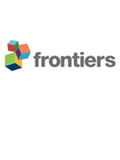
Frontiers in Materials
Exploring New Horizons in Materials Innovation.Frontiers in Materials, an esteemed journal published by FRONTIERS MEDIA SA, is a leading platform in the field of Materials Science, with a notable impact factor placing it in the Q2 category of its discipline as of 2023. Since its establishment as an Open Access journal in 2014, it has fostered considerable academic exchange, allowing researchers from around the globe to share their innovative findings and insights. Based in Lausanne, Switzerland, this journal not only emphasizes high-quality peer-reviewed articles but also prioritizes rapid dissemination of research, as evidenced by its commendable Scopus ranking of #62 out of 196 in Materials Science (miscellaneous). By consistently striving to bridge the gap between academia and practical applications, Frontiers in Materials serves as an invaluable resource for researchers, professionals, and students seeking to delve into cutting-edge advancements and transformative applications in materials science.
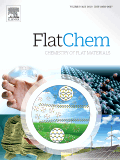
FlatChem
Advancing the Frontiers of Materials ScienceFlatChem, an esteemed journal published by ELSEVIER, serves as a premier platform for disseminating high-quality research in the dynamic fields of ceramic and composite materials, electronic and optical materials, materials chemistry, and surfaces, coatings, and films. Since its inception in 2017, the journal has garnered a robust reputation, evidenced by its rank in the top quartile (Q1) across multiple categories, including a commendable rank of #25/127 in Ceramics and Composites and #49/284 in Electronic, Optical and Magnetic Materials. With a focus on pioneering advancements and innovative methodologies, FlatChem not only highlights cutting-edge research but also promotes collaboration and knowledge exchange within the scientific community. The journal’s impact is underscored by its impressive rankings in Scopus, marking it as a vital resource for researchers, professionals, and students aiming to stay at the forefront of materials science. As an open-access journal, it ensures that groundbreaking findings are readily accessible, fostering a broader understanding and application of materials innovation worldwide. The journal is based in the Netherlands, with its headquarters located at RADARWEG 29, 1043 NX AMSTERDAM, NETHERLANDS. Join the vibrant community contributing to FlatChem and engage with the forefront of material advancements.